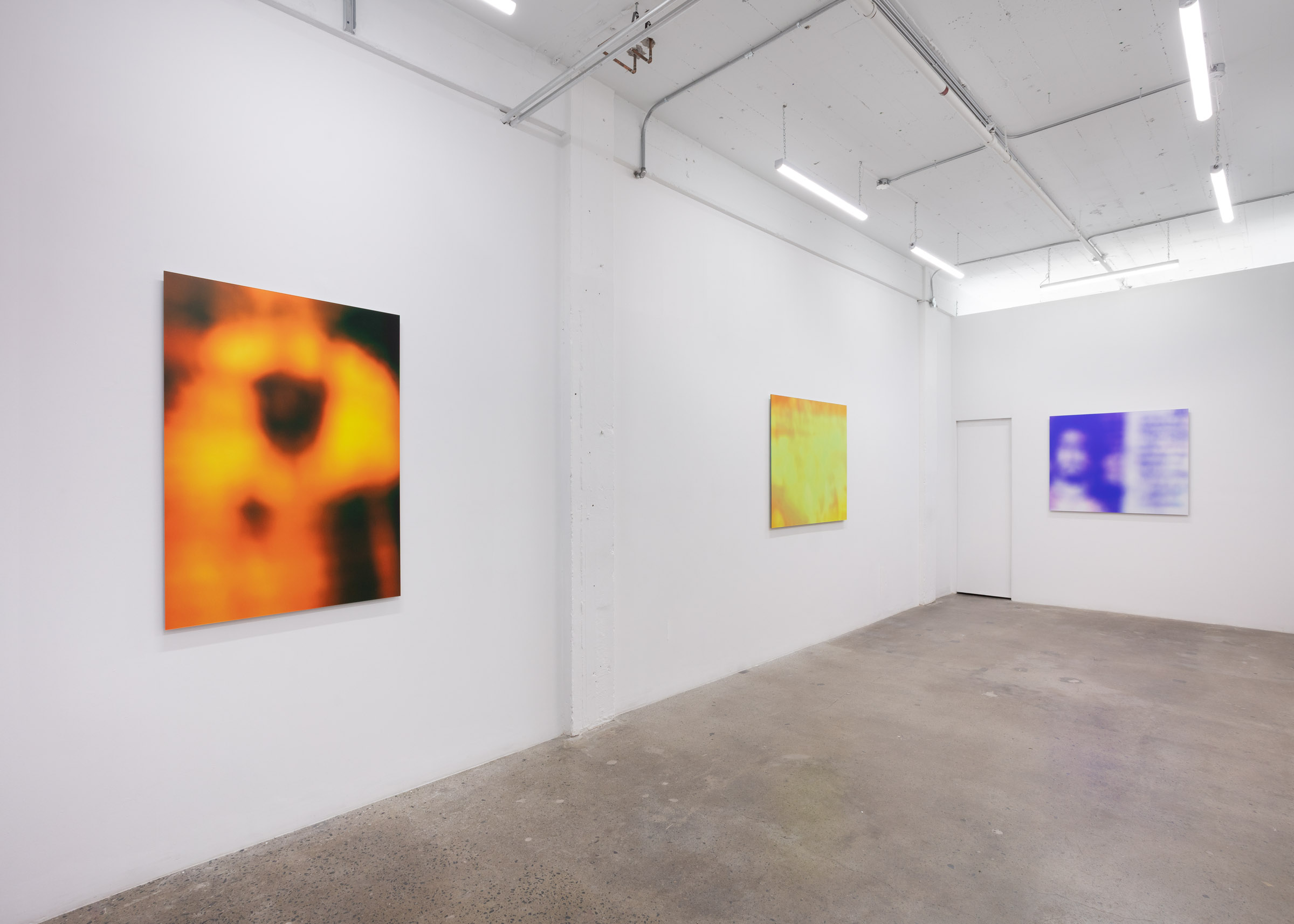






















Franz Kaka is pleased to announce Nabil Azab’s second solo exhibition with the gallery, Thank you for this beautiful world. Following Open Channel, presented at the gallery in 2023, this new body of work continues the artist’s distinct approach of rendering archival source images into abstractions through manipulating photographic techniques. The archival basis of this new work is an issue of The National Post from January 1, 2000, which Azab happened upon in a Toronto estate sale.
Thank you for this beautiful world thinks about the potency of this specific date in relation to the history of photography. With titles lifted from the newspaper’s headlines (“All creatures will be subject to time's flow,” and “No sign of new age apocalyptic rituals anywhere”) and fields of colour evocative of an early digital palette, the works hang in the gallery like apparitions of the heightened moment of anticipation attached to the millennial turn.
In their new body of work, Azab thinks of the early history of the photographic medium as an analogue for the moment of Y2K. In the rearview, the year 2000 is reified as the moment when total image production, circulation, and saturation began. The exhibition takes the subject of January 1, 2000 as a stand-in for a moment of perceived collective consciousness pertaining to the anxiety surrounding the new digital order. The series of larger works in the exhibition are created from scans of the newspaper, manipulated many times over. The smaller works are solar prints, made with the negatives of those same scans. The process of UV emulsion printing results in a poorly registered image, pushing the abstraction of the representational medium even further.
At the centre of the exhibition is Everything is ok (2025) building on Azab’s fascination with images of crowds and gatherings. The work is a response to Eugène Atget’s Pendant l'éclipse, a photograph taken at Place de la Bastille in Paris, just blocks from where Azab was born. Atget’s image shows a crowd of huddled people, holding up lenses to watch the moon eclipse the sun on April 17, 1912. The image was taken up by the contemporaneous surrealist milieu, used in several print publications reckoning with the impact of technologies of reproduction on the psyche. Likewise, Azab’s image is an image of a crowd gathered for fireworks on December 31, 1999, the bodies barely distinguishable from sparks of light. They gather in anticipation of the new millennium, the entry into our current end-stage of social media, artificial intelligence, and the landscape of “everything’s computer.”
The newspaper is at the heart of this body of work, highlighting the printed medium that is itself a bearer of information, a mediator between politics and perception. Azab is interested in the fraughtness of this mediation, circulation, and consumption–rooted in a family history of broadcasting in Egypt. The exhibition presents an ominous optimism. Which world do we celebrate? What parts of it are beautiful? The works take the source information itself and render it illegible, sinking instead into emotive compositions where only colour and diffuse forms are left, playing out against the light of the photographic apparatus.
____
Nabil Azab (b. 1994, Paris, FR) is a lens-based artist, researcher, and writer currently living in Los Angeles, US. Azab employs drawing, painting, writing, and archival research as fodder for abstract photographic works that resist the objectivity and disciplinarity of the medium. Azab’s work considers archival material as sources for abstracted photographic works and writing. Recent solo exhibitions include You are not very far away at PLATFORM, Winnipeg, CA; The big mess with us inside it, Pumice Raft, Toronto, CA; Open Channel, Franz Kaka, Toronto, CA; Something good that never happened, Afternoon Projects, Vancouver, CA; the welling up which would not pass, DRAC, Drummondville, CA. They are currently part of a two-person exhibition at Onsite Gallery, Toronto, CA. Azab is an MFA candidate at The University of California, Riverside.
